Separation methods for food protein purification and analysis
The extraction, separation, and purification of dietary proteins from a variety of food sources are crucial for their targeted use in food applications. To achieve this, proteins should be effectively separated from non-protein co
[...] Read more.
The extraction, separation, and purification of dietary proteins from a variety of food sources are crucial for their targeted use in food applications. To achieve this, proteins should be effectively separated from non-protein components such as cell wall structures, polysaccharides, and lipids. Traditional protein purification methods can be time-consuming, highlighting the need for automated, cost-effective, and sustainable alternatives. This comprehensive review critically assesses various protein purification instruments from an analytical perspective, weighing their advantages and disadvantages. The methods under evaluation include ultrafiltration, sodium dodecyl sulfate-polyacrylamide gel electrophoresis (SDS-PAGE), fast protein liquid chromatography (FPLC), high-performance liquid chromatography (HPLC), ultra performance liquid chromatography (UPLC), and microfluidic chips. Among these, FPLC stands out as an affordable and efficient technique that allows for high protein recovery. However, HPLC and UPLC provide faster results but may denature proteins, leading to lower recovery rates. Ultrafiltration is a cost-effective and straightforward method that doesn’t require complex equipment. Microchip-based approaches are emerging as innovative techniques for rapidly analyzing small samples. While SDS-PAGE is user-friendly, it denatures proteins, particularly those linked to other biomolecules. The choice of the most appropriate instrument depends on factors such as cost, energy efficiency, processing time, the characteristics of the target protein, desired outcomes, protein recovery, and resource availability. By critically examining these analytical instruments for protein purification, this review aims to assist researchers and practitioners in selecting the most suitable method for their specific needs, ultimately promoting efficient and successful protein purification endeavors in the field of food science and technology.
Anushi Madushani Wijethunga, Chijioke Emenike
View:1977
Download:61
Times Cited: 0
The extraction, separation, and purification of dietary proteins from a variety of food sources are crucial for their targeted use in food applications. To achieve this, proteins should be effectively separated from non-protein components such as cell wall structures, polysaccharides, and lipids. Traditional protein purification methods can be time-consuming, highlighting the need for automated, cost-effective, and sustainable alternatives. This comprehensive review critically assesses various protein purification instruments from an analytical perspective, weighing their advantages and disadvantages. The methods under evaluation include ultrafiltration, sodium dodecyl sulfate-polyacrylamide gel electrophoresis (SDS-PAGE), fast protein liquid chromatography (FPLC), high-performance liquid chromatography (HPLC), ultra performance liquid chromatography (UPLC), and microfluidic chips. Among these, FPLC stands out as an affordable and efficient technique that allows for high protein recovery. However, HPLC and UPLC provide faster results but may denature proteins, leading to lower recovery rates. Ultrafiltration is a cost-effective and straightforward method that doesn’t require complex equipment. Microchip-based approaches are emerging as innovative techniques for rapidly analyzing small samples. While SDS-PAGE is user-friendly, it denatures proteins, particularly those linked to other biomolecules. The choice of the most appropriate instrument depends on factors such as cost, energy efficiency, processing time, the characteristics of the target protein, desired outcomes, protein recovery, and resource availability. By critically examining these analytical instruments for protein purification, this review aims to assist researchers and practitioners in selecting the most suitable method for their specific needs, ultimately promoting efficient and successful protein purification endeavors in the field of food science and technology.
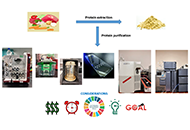 Separation methods for food protein purification and analysisOpen AccessReviewThe extraction, separation, and purification of dietary proteins from a variety of food sources are crucial for their targeted use in food applications. To achieve this, proteins should be effectively separated from non-protein co [...] Read more.Anushi Madushani Wijethunga, Chijioke EmenikePublished: July 30, 2024 Explor Foods Foodomics. 2024;2:391–407
Separation methods for food protein purification and analysisOpen AccessReviewThe extraction, separation, and purification of dietary proteins from a variety of food sources are crucial for their targeted use in food applications. To achieve this, proteins should be effectively separated from non-protein co [...] Read more.Anushi Madushani Wijethunga, Chijioke EmenikePublished: July 30, 2024 Explor Foods Foodomics. 2024;2:391–407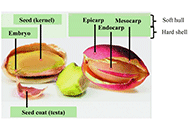 Nutritional and bioactive characterization of pistachio—a review with special focus on healthOpen AccessReviewThis paper reviews the nutritional quality and safety of edible farmed insects from the point of view of the Czech-Slovenian bilateral project: Quality, Safety and Authenticity of Insect Protein-bas [...] Read more.Juliana Ripari Garrido ... María Victoria SalinasPublished: July 26, 2024 Explor Foods Foodomics. 2024;2:363–390
Nutritional and bioactive characterization of pistachio—a review with special focus on healthOpen AccessReviewThis paper reviews the nutritional quality and safety of edible farmed insects from the point of view of the Czech-Slovenian bilateral project: Quality, Safety and Authenticity of Insect Protein-bas [...] Read more.Juliana Ripari Garrido ... María Victoria SalinasPublished: July 26, 2024 Explor Foods Foodomics. 2024;2:363–390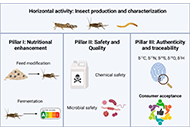 Quality, safety and authenticity of insect protein-based food and feed: insights from the INPROFF ProjectOpen AccessReviewThis paper reviews the nutritional quality and safety of edible farmed insects from the point of view of the Czech-Slovenian bilateral project: Quality, Safety and Authenticity of Insect Protein-based Food and Feed (INPROFF). Inse [...] Read more.David Heath ... Nives OgrincPublished: July 24, 2024 Explor Foods Foodomics. 2024;2:339–362
Quality, safety and authenticity of insect protein-based food and feed: insights from the INPROFF ProjectOpen AccessReviewThis paper reviews the nutritional quality and safety of edible farmed insects from the point of view of the Czech-Slovenian bilateral project: Quality, Safety and Authenticity of Insect Protein-based Food and Feed (INPROFF). Inse [...] Read more.David Heath ... Nives OgrincPublished: July 24, 2024 Explor Foods Foodomics. 2024;2:339–362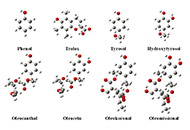 Metrological aspects of a gas-phase DFT/B3LYP quantum-chemical approach to prioritize radical scavenging activity among a group of olive oil phenolsOpen AccessOriginal ArticleAim: A protocol relying on quantum chemical calculations to assist prioritization of phenolic compounds as antioxidants in terms of hydrogen atom donation efficiency is presented. The use of reference compounds, an important metro [...] Read more.Nikolaos Nenadis, Maria Z. TsimidouPublished: July 18, 2024 Explor Foods Foodomics. 2024;2:326–338
Metrological aspects of a gas-phase DFT/B3LYP quantum-chemical approach to prioritize radical scavenging activity among a group of olive oil phenolsOpen AccessOriginal ArticleAim: A protocol relying on quantum chemical calculations to assist prioritization of phenolic compounds as antioxidants in terms of hydrogen atom donation efficiency is presented. The use of reference compounds, an important metro [...] Read more.Nikolaos Nenadis, Maria Z. TsimidouPublished: July 18, 2024 Explor Foods Foodomics. 2024;2:326–338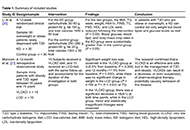 Effectiveness of ketogenic therapy in patients with obesity and diabetes: a narrative reviewOpen AccessReviewOver the past few decades, there has been a major increase in type 2 diabetes (T2D) prevalence, a long-term medical condition in which your body doesn't use insulin properly in most regions of the w [...] Read more.Paola Pellegrini ... Maria D’EliaPublished: July 17, 2024 Explor Foods Foodomics. 2024;2:313–325
Effectiveness of ketogenic therapy in patients with obesity and diabetes: a narrative reviewOpen AccessReviewOver the past few decades, there has been a major increase in type 2 diabetes (T2D) prevalence, a long-term medical condition in which your body doesn't use insulin properly in most regions of the w [...] Read more.Paola Pellegrini ... Maria D’EliaPublished: July 17, 2024 Explor Foods Foodomics. 2024;2:313–325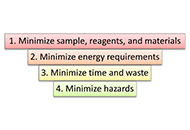 The role of liquid phase microextraction in plant and animal food analysisOpen AccessReviewFood samples require extensive sample preparations for instrumental analyses due to the complex matrices involved. Food safety regulatory agencies also require sample preparation procedures that are [...] Read more.John M. KokosaPublished: July 17, 2024 Explor Foods Foodomics. 2024;2:275–312
The role of liquid phase microextraction in plant and animal food analysisOpen AccessReviewFood samples require extensive sample preparations for instrumental analyses due to the complex matrices involved. Food safety regulatory agencies also require sample preparation procedures that are [...] Read more.John M. KokosaPublished: July 17, 2024 Explor Foods Foodomics. 2024;2:275–312